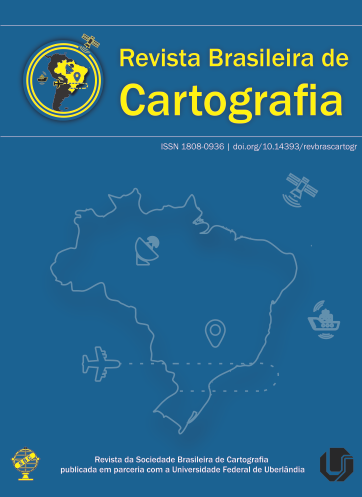Análise Exploratória de Dados Espaciais da Violência Contra LGBTQIA+ no Brasil
Conteúdo do artigo principal
Resumo
Homofobia é uma violência vivida pela comunidade LGBTQIA+, caracterizada pelo ódio ou aversão a sua manifestação sexual. Essa violência ocorre em diferentes regiões do Brasil, tornando-se importante o conhecimento do índice de casos de homofobia nas Unidades da Federação (UF), possibilitando a realização de estudos estratégicos para a elaboração de políticas, em termos de segurança pública e direitos humanos. O objetivo deste artigo é apresentar, por meio de mapas temáticos, a distribuição espacial dos casos de violência contra LGBTQIA+ no Brasil, no período de 2011 a 2019, realizando análises espaciais com a integração de dados através do Sistema de Informação Geográfica (SIG). O estudo foi realizado baseado nos casos de discriminação, violência física e violência psicológica registrados no “Disque 100”, canal de denúncias vinculado ao Ministério da Mulher, da Família e dos Direitos Humanos. Calculou-se a taxa de violência para cada UF, e que posteriormente foi corrigida pelo Método Bayesiano Empírico Local. Na análise espacial, foram calculados os Índices de Moran Global e Local para verificar a existência de autocorrelação espacial. A região Nordeste do Brasil apresentou maiores taxas de violência contra LGBTQIA+. Cerca de 61,54% das UF que apresentaram maiores taxas de violência possuíam menores Índices de Desenvolvimento Humano do país. O índice global indicou autocorrelação espacial para todos os anos de análise, enquanto o índice local identificou agrupamentos de áreas com valores semelhantes. Os resultados apresentados neste trabalho evidenciam a importância da utilização do SIG como ferramenta de apoio no planejamento de políticas e ações de segurança pública.
Downloads
Detalhes do artigo
Seção

Esta obra está licenciado com uma Licença Creative Commons Attribution 3.0 Unported License.
Autores que publicam nesta revista concordam com os seguintes termos:
- Autores mantém os direitos autorais e concedem à revista o direito de primeira publicação, com o trabalho simultaneamente licenciado sob a Licença Creative Commons Atribuição que permite o compartilhamento do trabalho com reconhecimento da autoria e publicação inicial nesta revista.
- Autores têm autorização para assumir contratos adicionais separadamente, para distribuição não-exclusiva da versão do trabalho publicada nesta revista (ex.: publicar em repositório institucional ou como capítulo de livro), com reconhecimento de autoria e publicação inicial nesta revista.
- Autores têm permissão e são estimulados a publicar e distribuir seu trabalho online (ex.: em repositórios institucionais ou na sua página pessoal) a qualquer ponto antes ou durante o processo editorial, já que isso pode gerar alterações produtivas, bem como aumentar o impacto e a citação do trabalho publicado (veja "O Efeito do Acesso Aberto").





